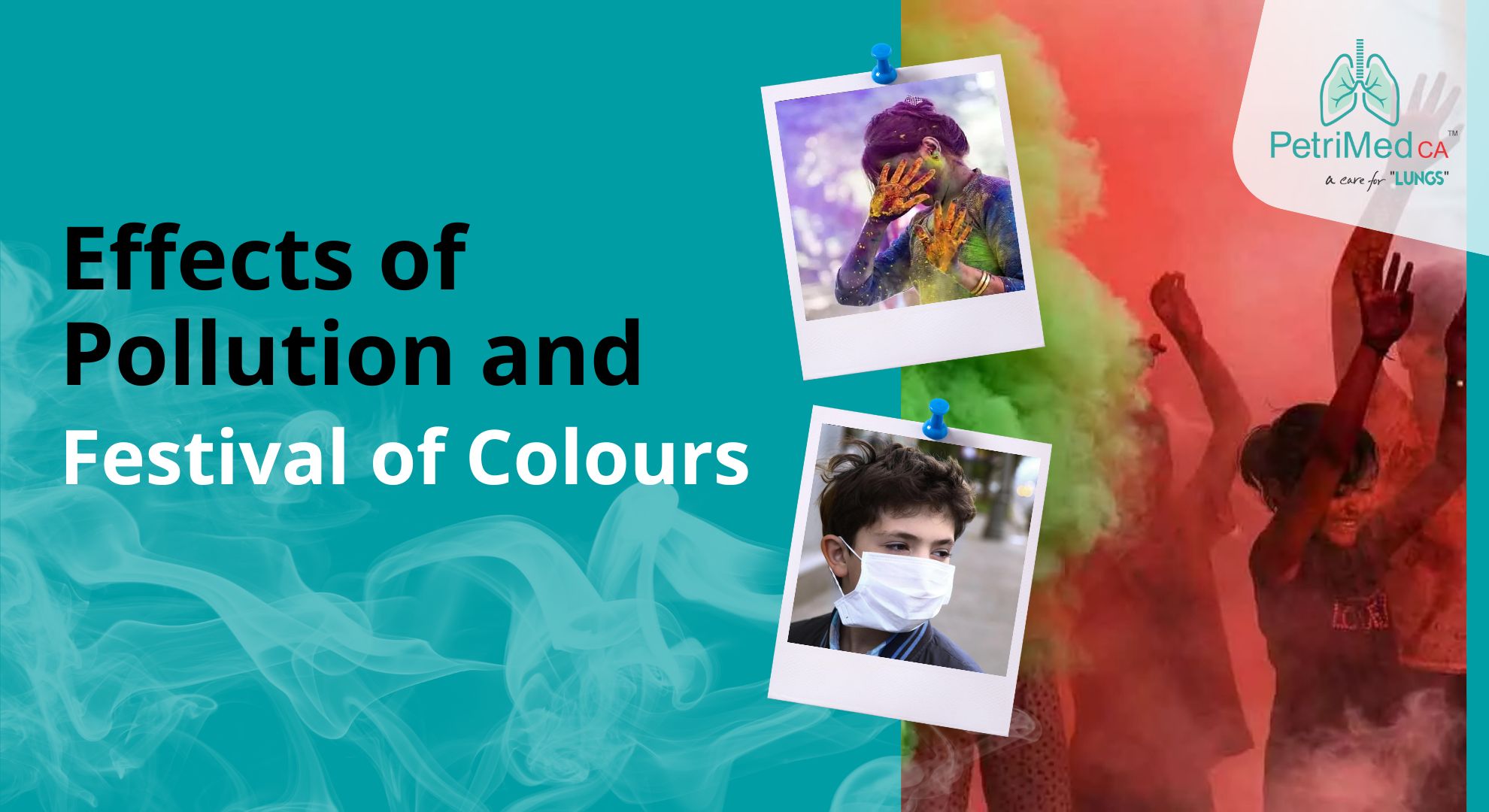The Impact of Using Synthetic Colours in Holi on Human Health
20 Mar 2023
In India with the arrival of springtime just after monsoons, it begins the season of festivities with love, warmth, and a sense of togetherness. And Holi, also known as the festival of colours, marks the beginning of the festive season, which is celebrated all through the nation with fervour.
By tradition, people used to play with natural colours giving therapeutic benefits; the colours were prepared using natural flowers and spring-blossoming shrubs. As the early blooming spring have become scarce, we have started using artificial colours prepared from harmful materials like acids, mica, glass powder and alkalis that can potentially lead to serious health problems and allergies.
While it is a joyful and exuberant occasion, the festival can contribute to poor air quality in several ways. Today this act has an adverse effect on our atmosphere as we are already fighting deforestation. In addition to that it also releases carbon dioxide and carbon monoxide, and the particulate matter levels too get higher.
These colours are highly structured polymers and are very difficult to decompose biologically. Study was taken up with an initiative to determine the extent of effects that the ‘Holi’ colours have on water and soil, respectively. The bacteria inhabiting these contaminated water and soil samples were isolated for biochemical analyses.
Their ability to degrade these dyes was determined after optimization studies. Toxic trials were conducted on certain bacterial cultures and Triticum vulgare to check their impact on the other living flora and fauna in their surrounding environment. They are not readily degradable and cannot be removed by conventional wastewater treatment methods. Hence, the chemical colours mixed with water can damage water bodies and soil as well.
As it is India is facing water shortage now, the rain dance only aggravates the matter by causing huge wastage of water. Even the balloons can block the drainage system.
Holi leads to air pollution, considering there is a tradition of throwing colours in the air as well as at people. So, there is an impact on the health of those who are already suffering from respiratory disorders.
But the question is, how is it affecting the health of patients with respiratory ailments?
According to a medical journal published, cheap Holi colours, including liquid colours contain harmful agents like pieces of glass, mica and acids that have severe health effects. Other than these, Holi colours can also cause skin-related allergies like dermatitis and eczema. Both can lead to blisters, scaly skin, irritation, and itching.
Some of the respiratory allergies from Holi colours are as follows:
· Rhinitis: This allergy induces inflammatory responses in the nasal membrane. Some of its symptoms include runny nose, sneezing and nasal congestion.
· Pneumonitis: Pneumonitis happens when colours with chemical agents are inhaled. Symptoms include chest congestion, difficulty in breathing and fatigue.
· Asthma: Commercially sold colours have tiny PM 10 particles that can damage the airway. People may have trouble in breathing and tend to run out of breath, even after any short physical activity.
So, we at PetriMed CA, want to emphasize, as much as we can, how essential it is for you to take safety precautions during Holi.
What can you do to stay safe this Holi?
Some safety tips for Holi you should follow are:
· Use natural colours.
· Apply coconut oil or olive oil on your skin before going out for the celebration.
· Avoid eating anything, while your hands are coated with liquid or dry Holi colours.
· Celebrate this beautiful, colourful festival with your family and friends, without compromising on your well-being.
. Avoid using colours inside your home as they are discharged in the air and remain in the indoor environment for a long
. Use an air purification system to improve the indoor air quality
On that note, we wish you a happy and safe Holi!
